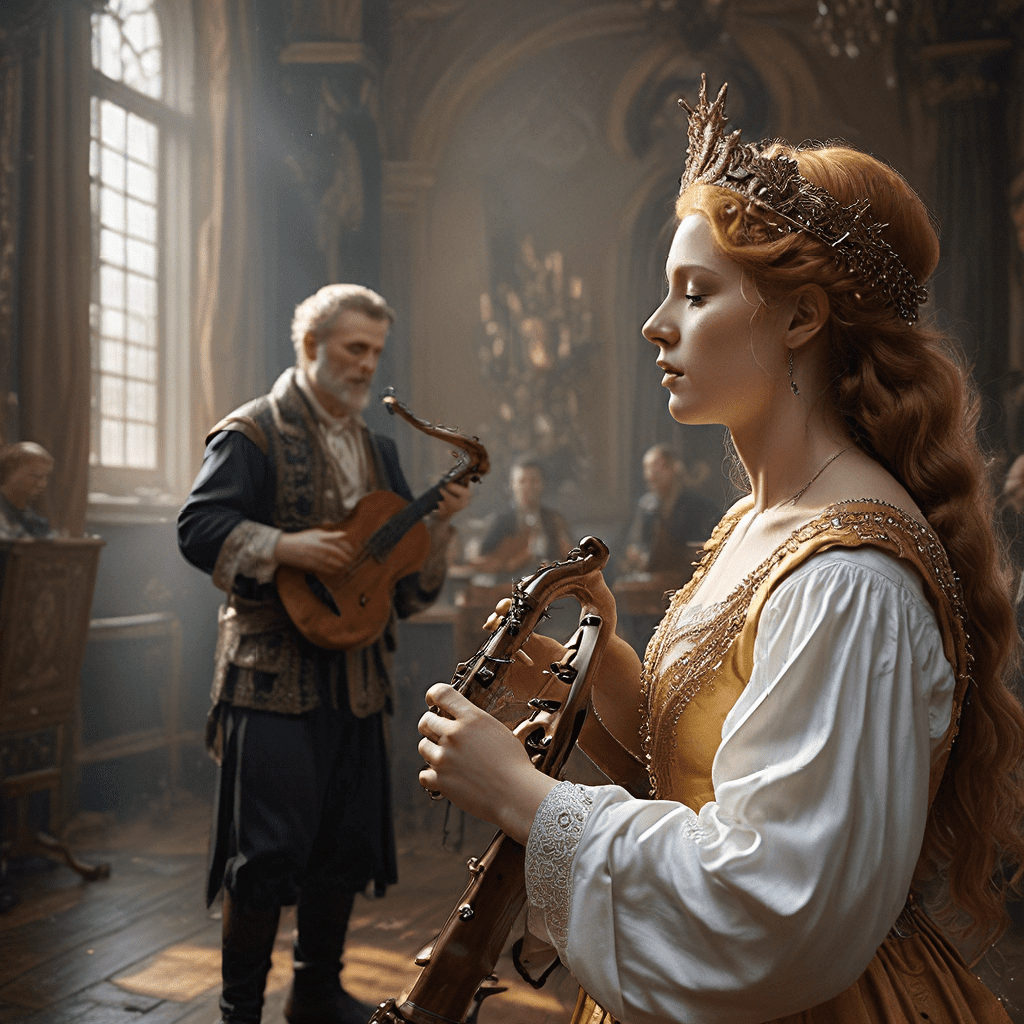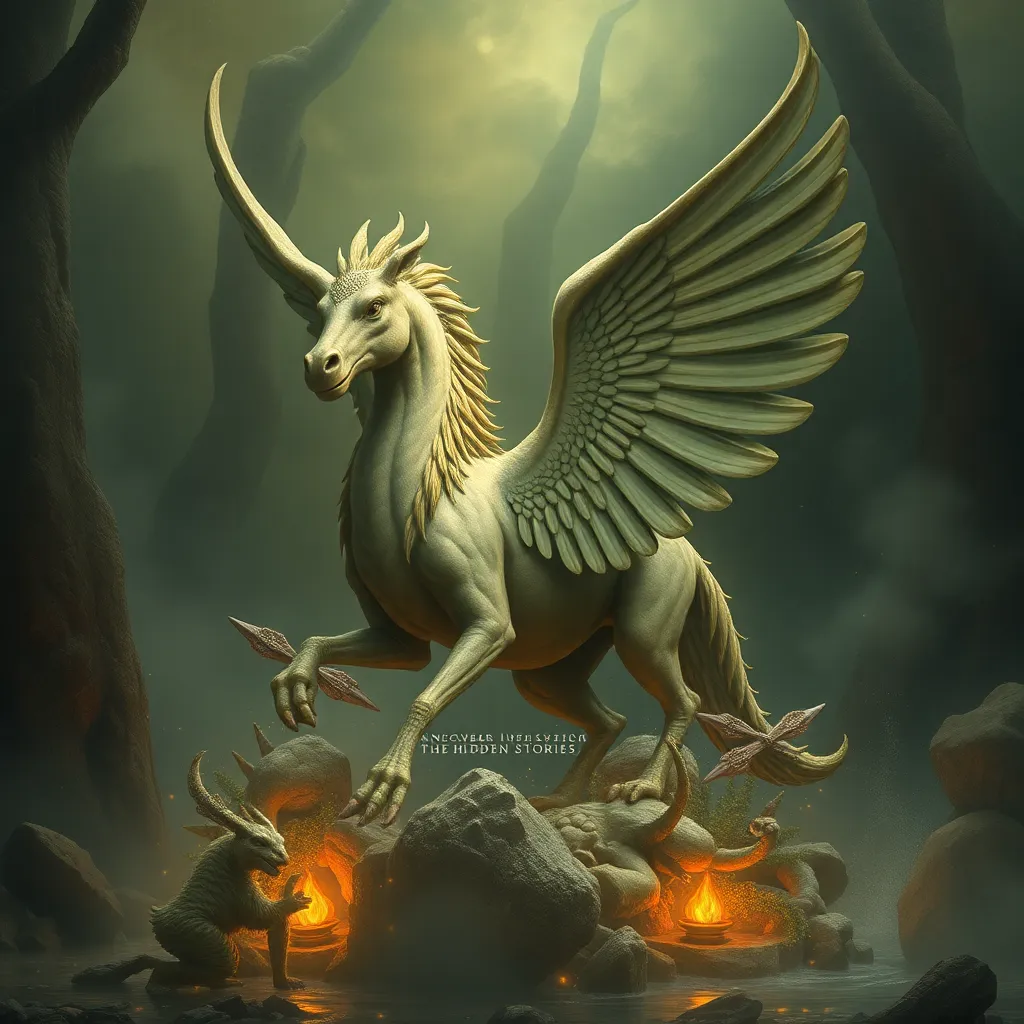The Role of Music and Poetry in Baltic Mythological Traditions
Introduction: Unveiling the Baltic Mythological Tapestry
The Baltic region, encompassing countries like Latvia, Lithuania, and Estonia, possesses a rich tapestry of myths and legends, woven into the fabric of its cultural identity. These ancient stories, passed down through generations, provide insights into the beliefs, values, and worldview of the Baltic people. At the heart of this mythological tradition lie the powerful forces of music and poetry, which played an integral role in shaping the lives and understanding of the ancient Baltic people.
The Baltic Pantheon: Gods, Goddesses, and their Domains
The Baltic pantheon, like many other mythologies, consists of a diverse array of gods and goddesses, each associated with specific domains and attributes. Among the most prominent figures include:
- Dievs: The supreme god, often depicted as a wise and powerful ruler, embodying order and justice.
- Perkūns: The god of thunder and lightning, known for his fierce strength and association with storms and natural phenomena.
- Laima: The goddess of fate and destiny, believed to control the course of individual lives and influence their fortune.
- Jūratė: The goddess of the sea, residing in the depths of the Baltic Sea, often depicted as a beautiful and mysterious figure.
These deities, along with a multitude of lesser gods and goddesses, were central to Baltic beliefs and rituals, influencing every aspect of life from agriculture to health and well-being.
The Power of Song and Verse: Shaping Reality in Baltic Mythology
In Baltic mythology, music and poetry were not merely forms of entertainment but possessed a profound power to shape reality itself. Songs and verses were believed to hold the ability to influence the natural world, interact with the divine, and even control the forces of fate.
- Creating and Maintaining Order: Music and poetry were used to establish and maintain order in the world. Rhythmic chants and melodies were believed to harmonize the natural forces and ensure the balance of the cosmos.
- Invoking the Divine: To communicate with the gods, the ancient Balts would employ special songs and verses. These sacred chants were believed to bridge the gap between the human and divine realms, allowing for communication, requests, and offerings.
- Manipulating Fate: In some narratives, songs and verses were said to have the power to influence destiny. Singing specific rhymes or chanting special formulas could alter the course of events, bringing good fortune or averting misfortune.
- Healing and Protection: The healing powers of music were deeply ingrained in Baltic tradition. Songs and verses were used to treat illnesses, ward off evil spirits, and provide protection from harm.
Music as a Bridge: Connecting the Human and the Divine
Music played a crucial role in bridging the gap between the human and divine realms. Through song and dance, the ancient Balts believed they could connect with the gods, express their reverence, and seek their favor.
- Ritual Performances: Music was central to many religious rituals. Songs and dances were performed to honor the gods, offer sacrifices, and appease their wrath.
- Offering Gratitude: Through song and dance, the Balts expressed their gratitude to the gods for bountiful harvests, good health, and protection from misfortune.
- Seeking Guidance: When facing challenges or seeking guidance, the Balts would turn to music and poetry as a means of communicating with the divine.
Poetry as a Tool for Storytelling and Preservation: Oral Tradition and Mythological Narratives
Poetry was a vital tool for preserving and transmitting the ancient Baltic myths and legends. With a predominantly oral culture, these stories were passed down through generations by skilled storytellers who used captivating verses and rhythmic language to captivate their audiences.
- Epic Tales and Ballads: Baltic folklore is rich in epic tales and ballads, often featuring heroic deeds, mythical creatures, and the adventures of gods and goddesses.
- Memorization and Transmission: Through poetic forms, such as verses, rhymes, and chants, these narratives were easily memorized and passed down from one generation to the next.
- Preserving Cultural Memory: Baltic poetry served as a repository of cultural memory, embodying the collective wisdom, beliefs, and values of the people.
Musical Instruments: Objects of Ritual and Symbolic Power
In the world of Baltic mythology, musical instruments weren't just tools for making music; they held deep spiritual significance and were used in rituals and ceremonies. These instruments were believed to connect the human world with the divine, amplify the power of music, and represent specific aspects of the natural world. Some of the most prominent instruments include:
Kanklės (Zither): This stringed instrument, resembling a small harp, was central to Baltic musical tradition. The kanklės' sound was associated with the harmony of nature, and it was believed to have the power to influence the weather and fertility. In myths, the kanklės is often linked to the goddess Laima, representing the strings of fate.
Dūdmaišis (Bagpipe): The bagpipe, with its haunting, melancholic sound, was often used in rituals related to death and the underworld. Its mournful melodies were believed to guide the souls of the departed into the afterlife.
Būgnas (Drum): The drum was a powerful instrument used in rituals to invoke the gods, especially Perkūns, the god of thunder. Its rhythmic beats were believed to echo the thunder of the sky and summon the god's power.
- Ragana (Horn): The horn, made from animal horns or wood, was used to signal important events, announce gatherings, and ward off evil spirits. Its resonant sound was believed to carry far and wide, spreading messages and influencing the surrounding environment.
These musical instruments were not simply objects; they were extensions of the spiritual world, embodying the power of music to shape reality, connect with the divine, and influence the course of events.
The Role of Music and Poetry in Rituals and Festivals: Marking Time and Honoring the Divine
Music and poetry were deeply interwoven into the fabric of Baltic rituals and festivals, marking the passage of time, celebrating important events, and honoring the gods. These performances were not merely entertainment; they were essential expressions of the people's beliefs and connection to the divine.
Solstice Celebrations: Solstice festivals, marking the longest and shortest days of the year, were major celebrations in Baltic culture, filled with music, dance, and storytelling. Songs and verses were used to honor the sun, ensure a bountiful harvest, and ward off evil spirits.
Harvest Festivals: After a successful harvest, the Balts would express their gratitude to the gods with elaborate rituals and celebrations. Music and poetry played a crucial role in these festivities, offering thanks for the bounty of the land and ensuring future prosperity.
Weddings and Funerals: Music and poetry were integral parts of both weddings and funerals. Wedding songs celebrated the joining of two families, while funeral songs honored the deceased and guided their souls into the afterlife.
- Religious Rituals: Throughout the year, Balts performed rituals to appease the gods, seek their guidance, and ask for their favor. These ceremonies often involved music and poetry, serving as a means of communicating with the divine and expressing devotion.
These rituals and festivals, infused with music and poetry, were vital expressions of Baltic culture, reflecting their beliefs, values, and deep connection to the natural world and the divine.
Music and Poetry: Echoes of the Ancient World in Modern Baltic Culture
While the ancient traditions of music and poetry in Baltic mythology may have evolved over time, their influence remains evident in modern Baltic culture. These echoes of the past are found in various forms:
Folk Songs and Dances: Traditional folk songs and dances, often passed down through generations, still retain elements of ancient mythology. These performances often tell stories of gods, goddesses, mythical creatures, and the forces of nature.
National Epics: The epic poems of Baltic traditions, such as the Latvian epic "Lāčplēsis" and the Lithuanian epic "Eglė the Queen," continue to be celebrated and performed, reminding people of their cultural heritage and the enduring power of storytelling.
Symbolism in Art and Literature: Elements of Baltic mythology, including symbols associated with music and poetry, are often found in modern Baltic art, literature, and music. These artistic expressions serve as reminders of the ancient beliefs and values that continue to shape the Baltic cultural landscape.
- Modern Musical Traditions: Contemporary Baltic composers and musicians continue to draw inspiration from their cultural heritage, incorporating elements of ancient folk music and poetry into their work. These modern interpretations reflect the enduring influence of traditional music and poetry on Baltic artistic expression.
Theories on the Relationship Between Music, Poetry, and Mythology: Exploring the Intertwined Nature of Art and Belief
The relationship between music, poetry, and mythology in ancient Baltic culture remains a subject of ongoing scholarly debate and study. Some prominent theories attempt to shed light on the intertwined nature of art and belief in ancient Baltic society:
Music as a Primal Language: Some scholars suggest that music, in its earliest forms, may have served as a kind of primal language, predating spoken language and expressing fundamental human experiences and emotions. This primordial music could have been the basis for the development of myths and legends, which were later recounted through poetry and song.
Poetry as a Medium for Mythological Transmission: Others argue that poetry, with its rhythmic structure and imaginative language, was a natural medium for transmitting and preserving myths and legends. The memorability and poetic beauty of myths and legends ensured their survival through generations.
The Power of Ritual Music: Another theory posits that music, especially when performed in ritual settings, possessed a profound power to influence both the individual and the collective consciousness. This ritual music, often associated with the divine, could have shaped the beliefs and worldview of the ancient Balts.
These theories highlight the complex interplay between music, poetry, and mythology in shaping ancient Baltic culture. Further research is needed to unravel the intricate connections between these forms of expression and understand their enduring influence on Baltic identity.
Conclusion: The Enduring Legacy of Music and Poetry in Baltic Mythological Traditions
The ancient Baltic people understood the power of music and poetry to shape reality, connect with the divine, and preserve their cultural heritage. Their myths and legends, passed down through generations, offer a glimpse into the profound role these art forms played in their lives. While the ancient traditions may have evolved, their echoes remain evident in modern Baltic culture, reminding us of the enduring power of creativity and the importance of preserving our cultural heritage.
FAQ
Q: What are some examples of Baltic myths and legends that feature music and poetry?
A: Some examples include the story of "Jūratė and Kastytis," where the goddess of the sea uses music to enchant the prince, and the tale of "Eglė the Queen," which features a powerful song that transforms a bird into a human.
Q: How did music and poetry influence the daily lives of the ancient Balts?
**A: ** Music and poetry were used in everyday life for healing, protection, storytelling, and rituals. They were an integral part of their cultural and spiritual identity.
Q: What are some modern ways that Baltic music and poetry are celebrated and preserved?
A: Modern Baltic artists continue to incorporate elements of traditional music and poetry into their work, and there are numerous festivals and cultural events dedicated to celebrating these art forms.
Q: What are some reasons why the study of Baltic mythology is important?
A: Studying Baltic mythology provides insights into the beliefs, values, and worldview of an ancient culture. It helps us understand the origins of modern Baltic traditions and provides a rich tapestry of stories and legends.



